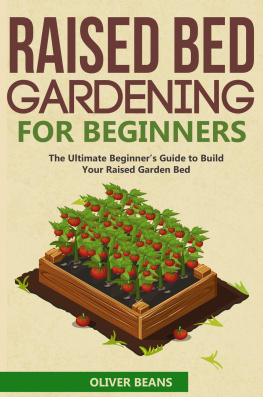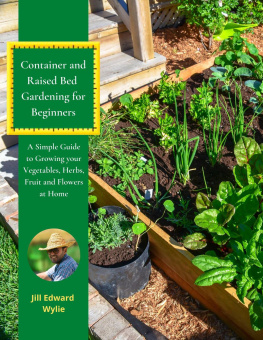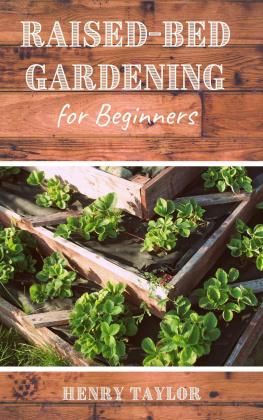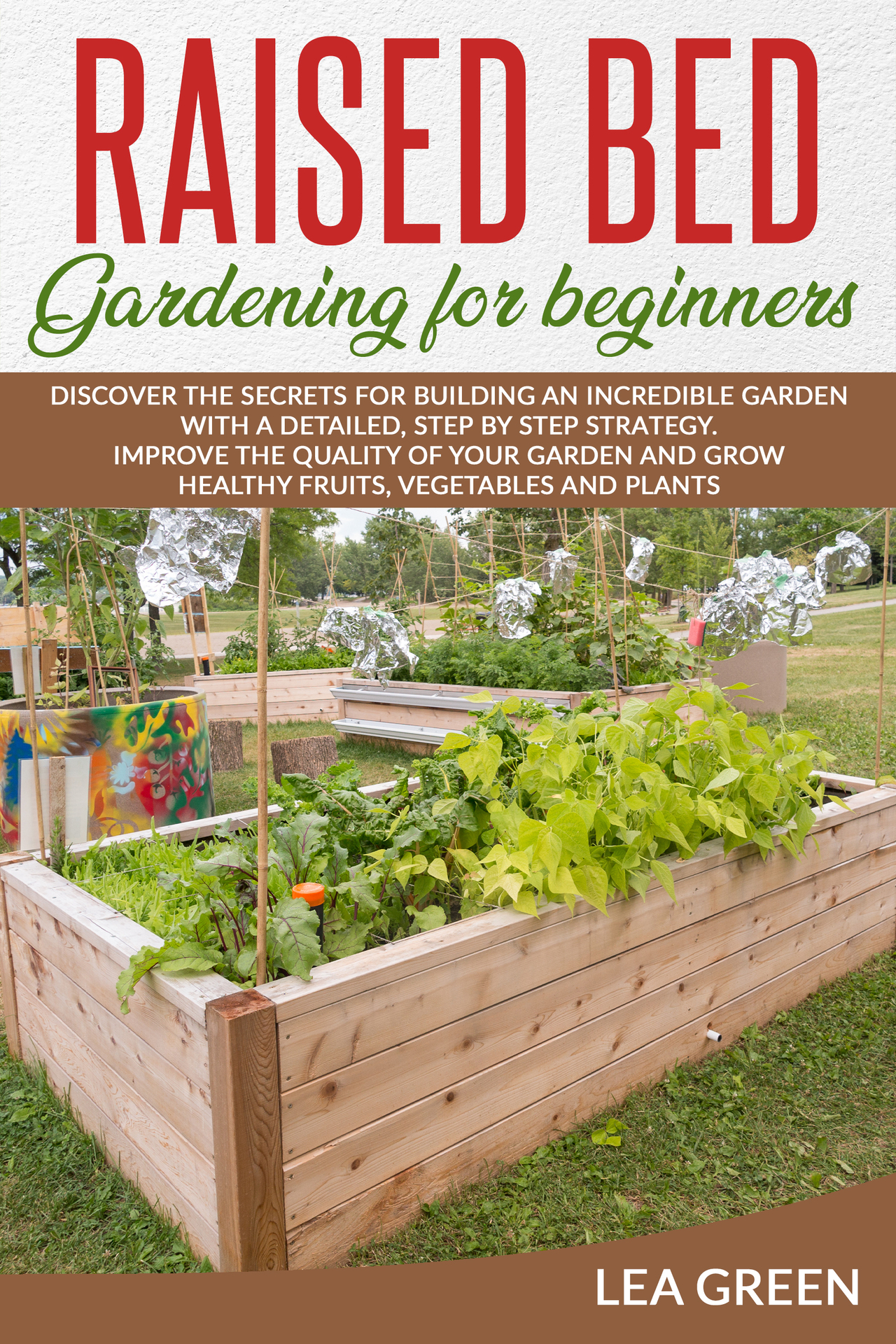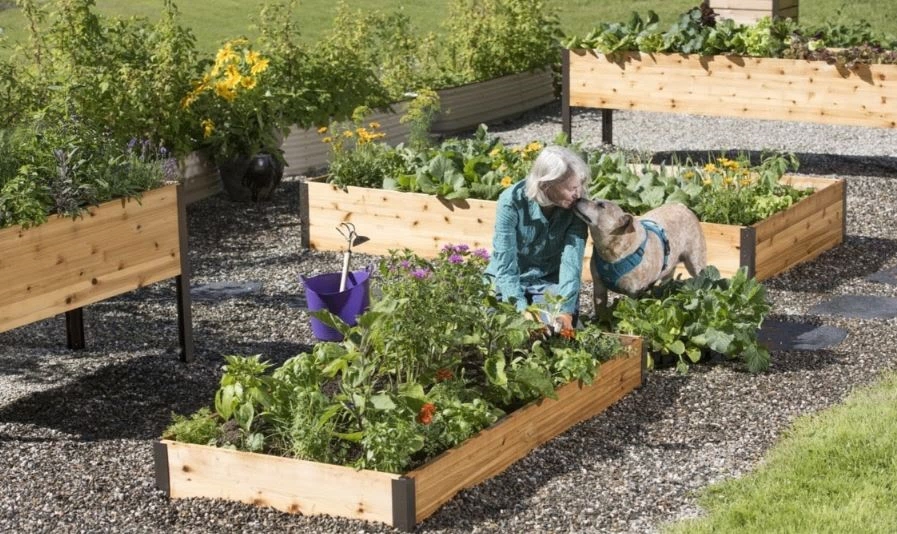Raised bed gardening for beginners:
Discover the Secrets for Building an Incredible Garden with a Detailed, Step by Step Strategy. Improve the Quality of Your Garden and Grow Healthy Fruits, Vegetables and Plants
LEA GREEN
Copyright 2020 - All rights reserved.
The content contained within this book may not be reproduced, duplicated or transmitted without direct written permission from the author or the publisher.
Under no circumstances will any blame or legal responsibility be held against the publisher, or author, for any damages, reparation, or monetary loss due to the information contained within this book. Either directly or indirectly.
Legal Notice: This book is copyright protected. This book is only for personal use. You cannot amend, distribute, sell, use, quote or paraphrase any part, or the content within this book, without the consent of the author or publisher.
Disclaimer Notice: Please note the information contained within this document is for educational and entertainment purposes only. All effort has been executed to present accurate, up to date, and reliable, complete information. No warranties of any kind are declared or implied. Readers acknowledge that the author is not engaging in the rendering of legal, financial, medical or professional advice. The content within this book has been derived from various sources. Please consult a licensed professional before attempting any techniques outlined in this book.
By reading this document, the reader agrees that under no circumstances is the author responsible for any losses, direct or indirect, which are incurred as a result of the use of information contained within this document, including, but not limited to, errors, omissions, or inaccuracies.
TABLE OF CONTENTS
Introduction
R aised bed gardening is a type of gardening where the dirt is framed in beds, which can be of any length or shape, however are for the most part around 3-4 feet wide. The dirt is raised over the ground and is normally encased by a casing made of wood, rock, or solid squares, and might be improved with fertilizer.
The vegetable plants in a raised bed garden are divided in geometric examples, a lot nearer together than in traditional line gardening. The dividing is with the end goal that when the vegetables are completely developed, their leaves scarcely contact one another, making a microclimate in which weed development is stifled and dampness is monitored.
Raised bed gardens are frequently the establishment of square-foot gardening, a technique for planting plants in frameworks.
Raised beds furnish the producer with an assortment of advantages. For instance, they broaden the planting season. They can likewise lessen weeds whenever structured and planted appropriately and they diminish the need to utilize poor local soil. Since the plant specialist doesn't stroll on the raised beds, the dirt isn't compacted and the roots have a simpler time developing.
The nearby plant separating and the utilization of manure by and large outcomes in better returns with raised beds in contrast with traditional line gardening. Abdomen high raised beds empower the older and truly crippled to develop vegetables without twisting around to tend them.
Raised nursery beds are otherwise called garden boxes. They are extraordinary for developing little plots of veggies and blossoms. They help to keep pathway weeds from your nursery soil, forestall soil compaction, give great seepage and fill in as a hindrance against bugs, for example, slugs and snails. The sides of the beds keep the nursery soil from being disintegrated or washed away during overwhelming downpours. In numerous areas, plant specialists can plant prior in the season in light of the fact that the dirt is hotter and better depleted when it is over the ground level.
By raising the dirt level, raised nursery beds additionally diminish back strain when twisting around to tend the bed. This is particularly useful to more established cultivators or individuals with terrible backs. In the event that the beds are constructed well, the nursery worker can likewise simply sit on the edge of the bed while weeding, and for certain plant specialists with back issues, this is the greatest advantage of all.
Raised beds are not equivalent to cultivate grower, as nursery grower are raised compartments that have bottoms to keep the dirt from dropping out. Nursery grower bottoms normally are slatted, with some sort of semi-penetrable fabric obstruction which grants waste. Raised beds, in any case, don't have bottoms and are available to the ground. This offers the advantage of allowing plant roots to go further into the ground for accessible supplements. Raised nursery beds are accessible in a wide range of materials, or they can be made without lifting a finger.
It is my belief that you will come to find that raised bed gardening combines some of the best features of indoor gardening with those of outdoor gardening. It is this combination that makes this approaches such a rewarding and refreshing avenue for starting your own garden.
Chapter 1 Why You Should Use Raised Beds
I will now point out some of the many benefits of this gardening method.
1. Excellent Aeration
The older, traditional way to create raised beds is simply to dig up the soil, piling it into rows. You can follow this method and then support the two sides by using solid frames. Otherwise, place your frames in place and then fill them up with compost, farmyard manure mixed with quality soil. Whichever way you choose to do it, your plants will flourish in this enriched soil, and its loose structure will allow excellent air circulation around all the roots.
We know that the different parts of plants all need to breathe, and so do the roots. For example, during photosynthesis, the leaves take in carbon dioxide and expel oxygen. If your plant sits in compact soil, the roots will suffocate and will not succeed in developing fully. This is because they need good aeration for their roots to be able to absorb the essential nutrients in the soil. To explain further, the soil bacteria convert the nitrogen in the little air pockets into nitrate salts and nitrate, thus providing the macronutrients for the plant. Without sufficient air, there is a lack of nitrogen, and therefore fewer nutrients will be available to the plant.
It is clear that the population of microbes in your vegetable soil must be kept healthy, and this is made possible with good aerated soil. The balance of anaerobic and aerobic bacteria should be maintained as they all play their different roles to enhance the fertility of the soil.
2. Good Drainage
Even during a downpour of rain, your raised beds will render good drainage. No wonder this method is so popular in the tropics with its heavy rainfall. Because the soil has such a loose texture, water will seep slowly into the bed instead of a making a quick runoff with the accompanying washing away of all fertile topsoil. Furthermore, all the excess water can easily drain away.
Although most plants do not mind moisture at all, they hate to get their feet wet. Firstly, all that water around their roots will make breathing almost impossible. Secondly, too much moisture will promote fungal and bacterial diseases. Lastly, excess water drenching the soil can change its pH level and raise the acidity. Plants which prefer more neutral or slightly alkaline soil will suffer as a result.









